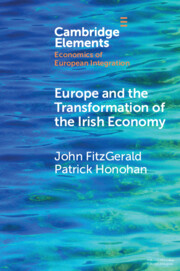Element contents
Europe and the Transformation of the Irish Economy
Published online by Cambridge University Press: 22 May 2023
Summary
- Type
- Element
- Information
- Online ISBN: 9781009306102Publisher: Cambridge University PressPrint publication: 15 June 2023
References
- 4
- Cited by

